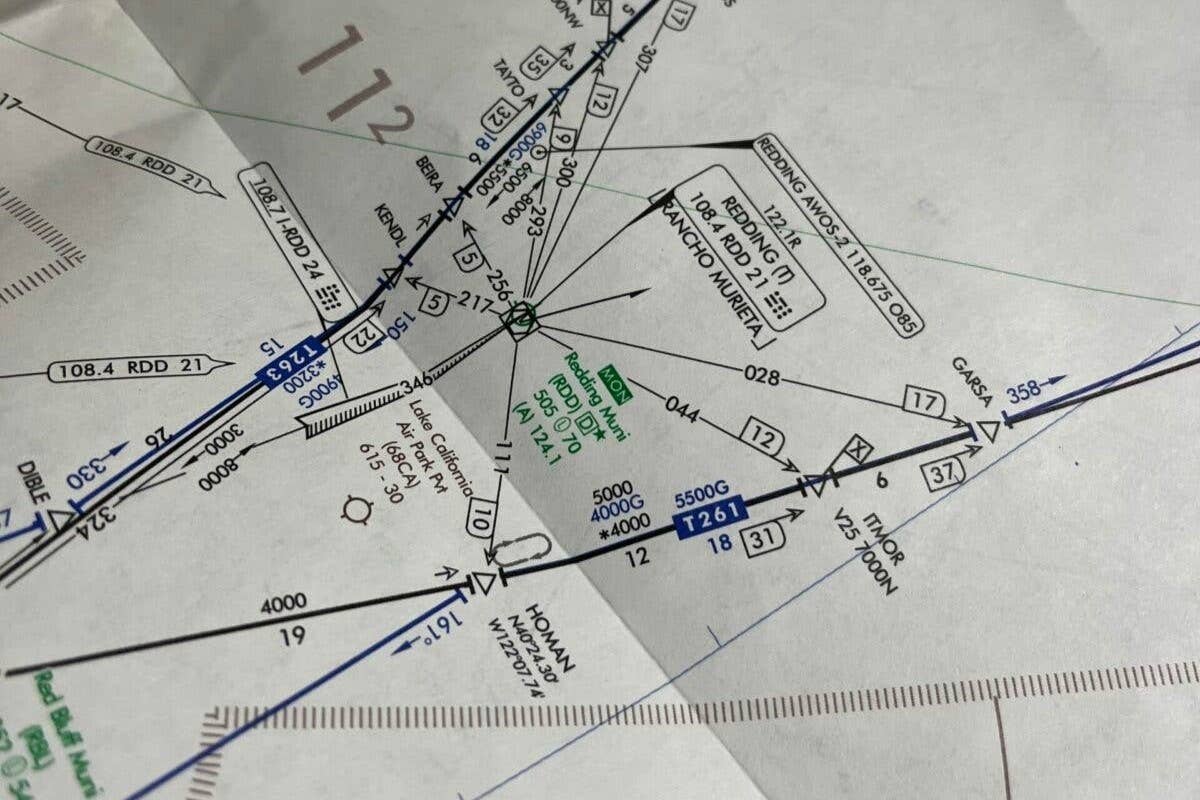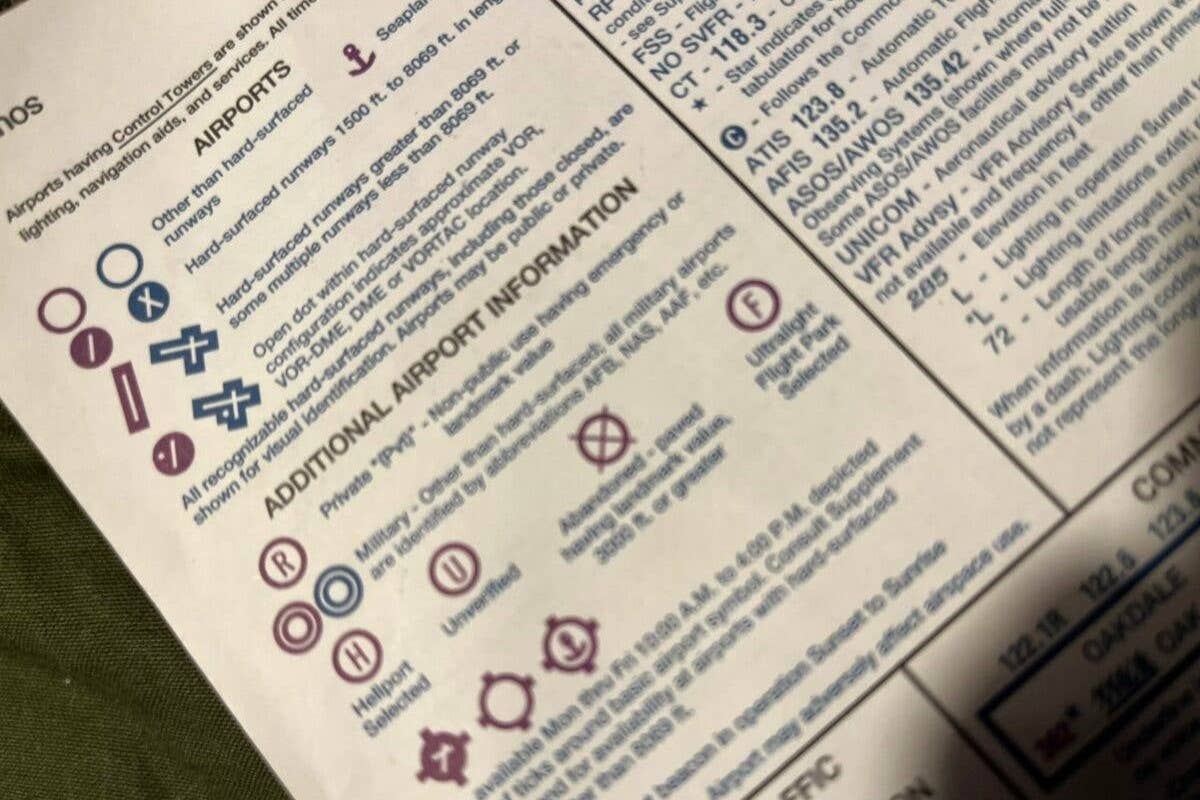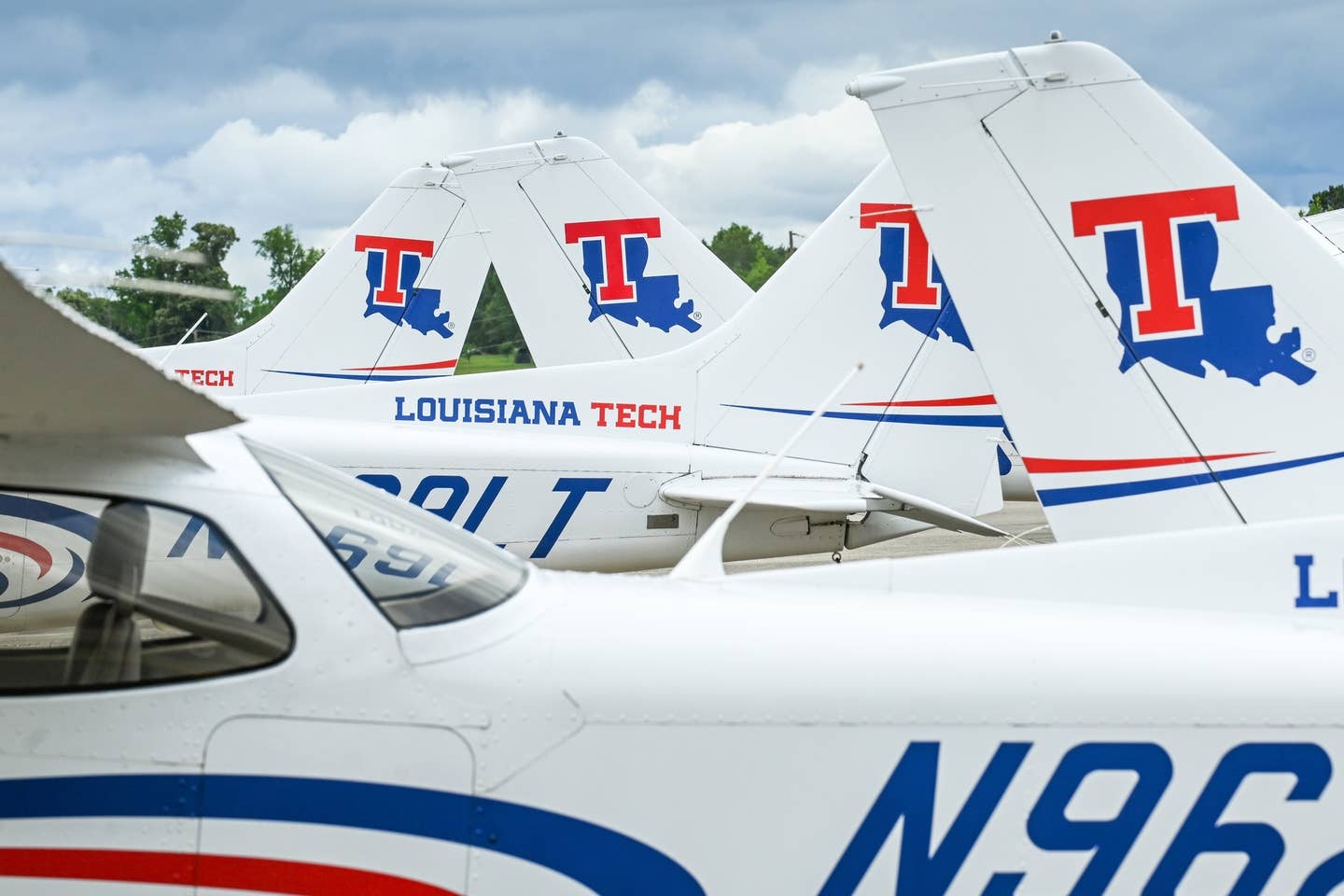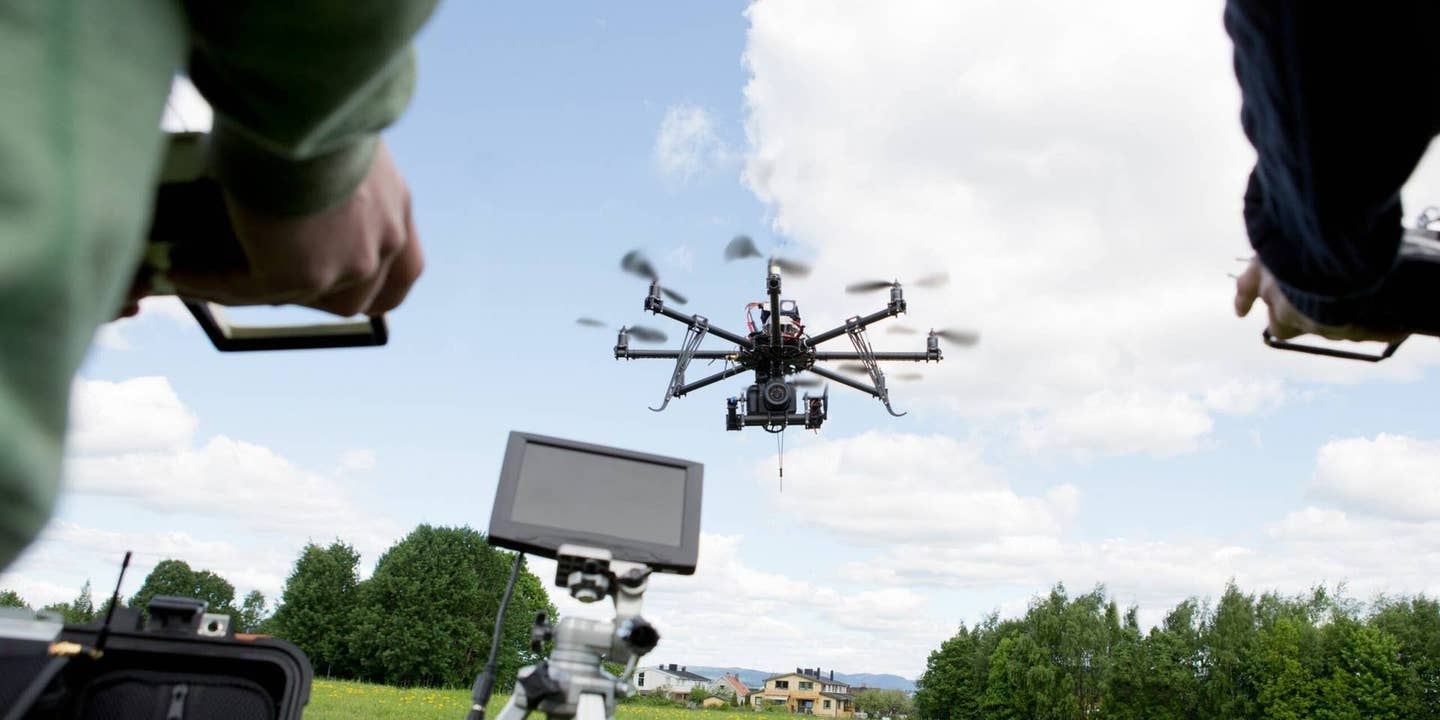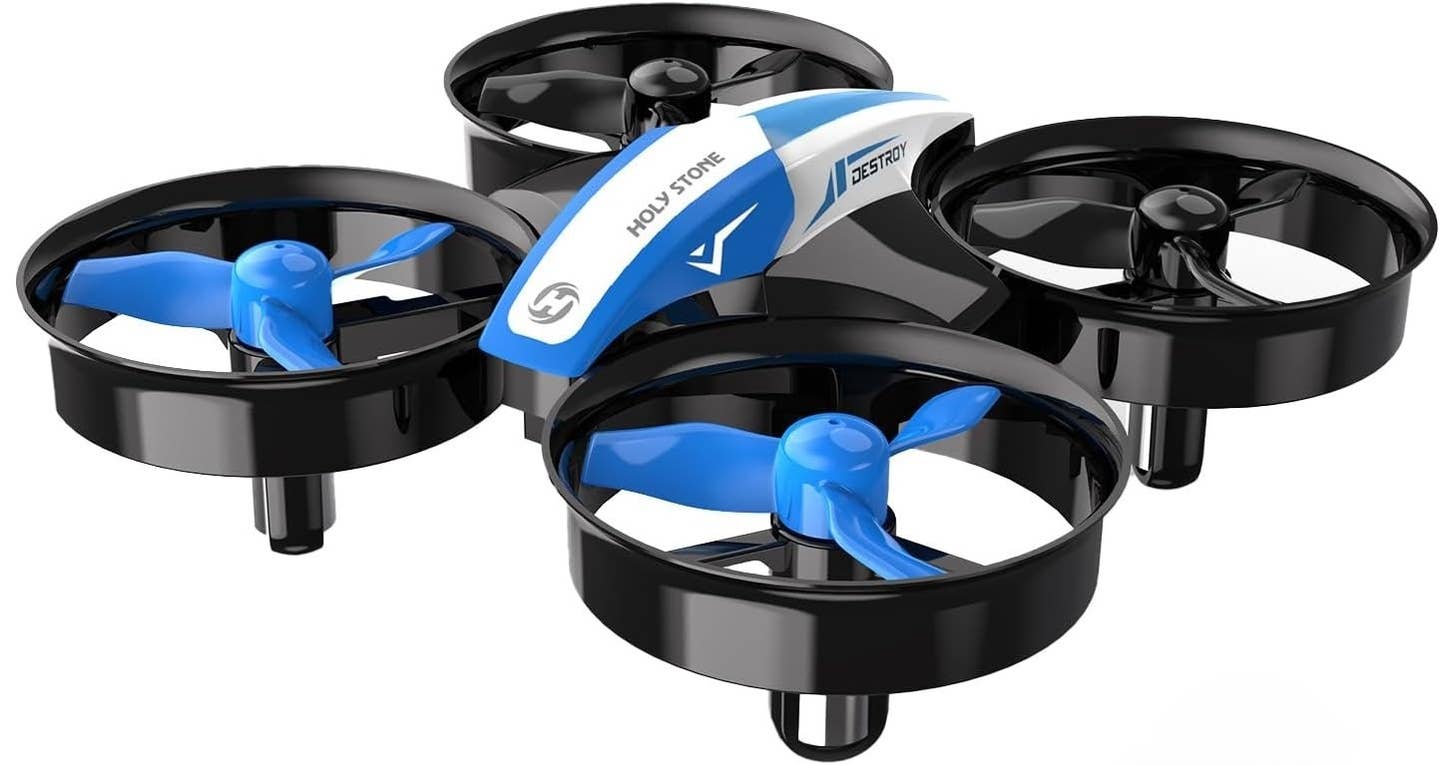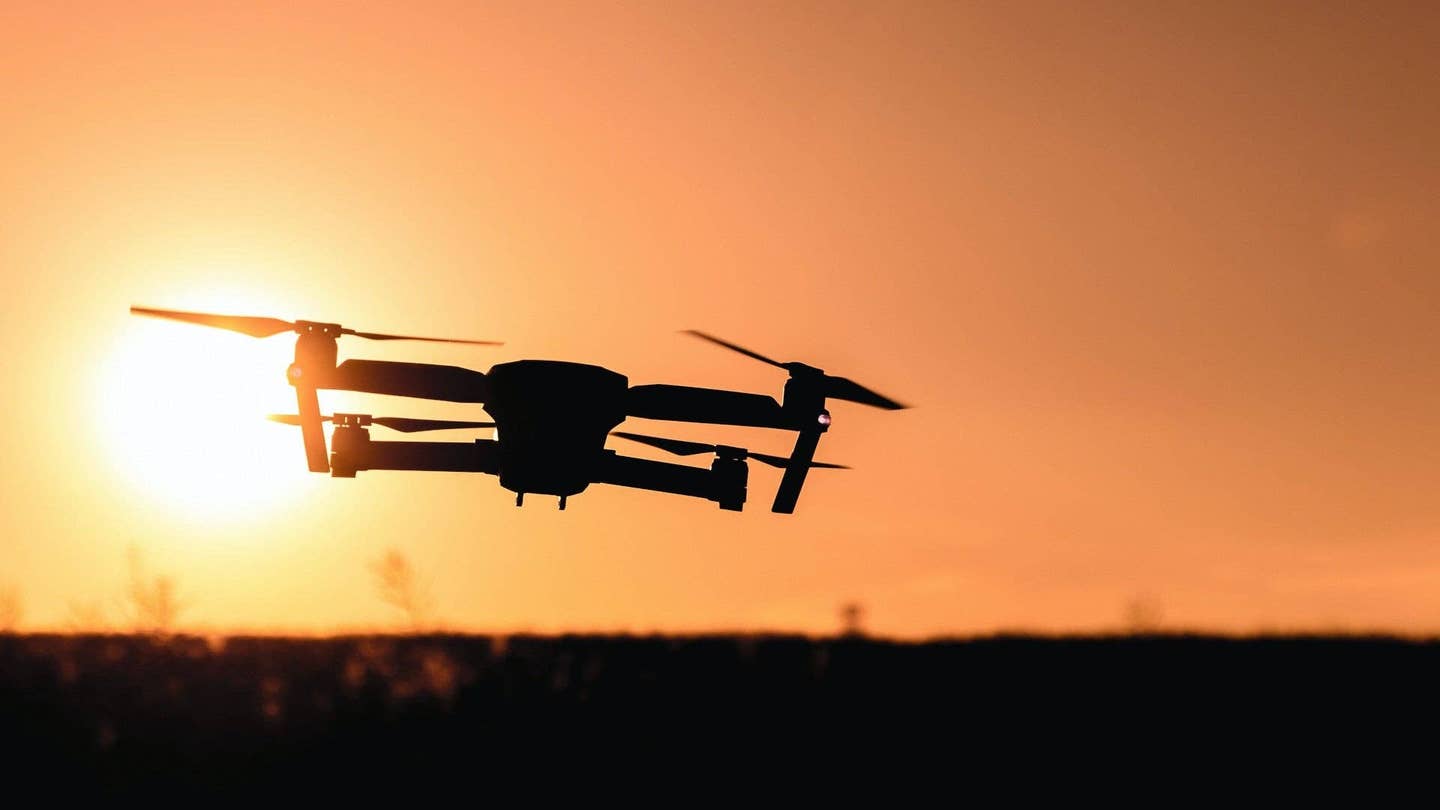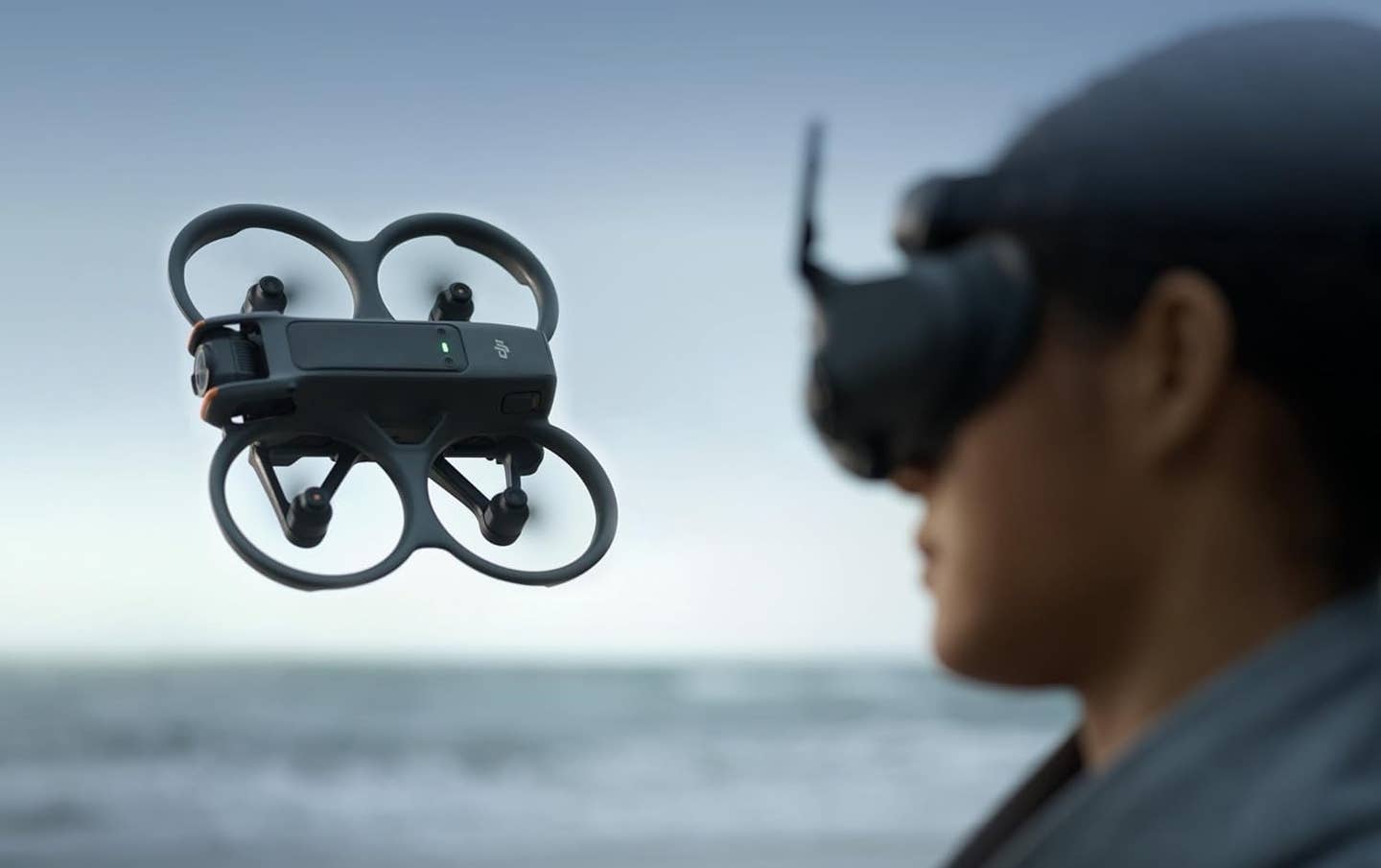
Looking at racing drone options? Here are five 2024 models we recommend. [Publicity photo]
Editor’s note: The following article is not intended to be a ranking, but is only to serve as a list of possible options. As the saying goes, your mileage may vary.
Choosing the best racing drone depends on various factors such as price, speed, size, weight, agility, transmission speed, battery life, and motor power.
To help you find the perfect match, we've compiled a list of the top-rated racing drones on Amazon, complete with their features, pros, and cons. Whether you're a seasoned racer or a newcomer, considering these aspects will guide you to the drone that best fits your needs and maximizes your chances of success.
Did you know commercial drone operators are required by the FAA to be licensed? Online courses such as those provided by Altitude University and the Pilot Institute will help you achieve success as a commercial drone pilot.
Pass the Part 107 test, take to the skies, and start earning money.
Quick Look: Best Racing Drone
- Best for overall features: iFlight Nazgul XL5
- Best for value: EMAX Tinyhawk II Freestyle
- Best for pocket drones: BETAFPV Cetus Pro
- Best for all skill levels: APEX VR70
- Best for overall design: DJI Avata 2
5 Racing Drone Options
Racing drones come in all shapes, sizes, and skill levels. There are a lot of options for racing drones and we did not have the opportunity to review them all.
But we did choose these five to showcase. As we begin the downhill slide toward the end of 2024, here are five racings drones you can grab on Amazon today:
iFlight Nazgul XL5
Notable for: Overall features
This 5-inch standard Freestyle drone redefines performance and value. Featuring an ATF435 flight controller, BLITZ 1.6W VTX, and BLITZ E55S 2-6S 55A ESC, the Nazgul XL5 ECO delivers unparalleled performance and reliability. Made for true racers looking to build a drone from the ground up, this model starts with a carbon fiber frame and an aluminum camera mount offering lightweight durability while ensuring it withstands rigorous flights and crashes. The included GoPro mount provides versatility for capturing your epic freestyle flights, making it perfect for both recreational and professional use. Take your flying experience to new heights with Nazgul XL5 ECO, the ultimate racing drone choice for those seeking a balance of performance, durability, and value.
Camera quality: Depends on the build
Flight time: Up to 18 minutes, depending on the build
Configuration: The pilot will need to build from the ground up.
Special features:
- Lightweight and durable construction: Made from a combination of carbon fiber and aluminum, ensuring robust protection for camera equipment without adding excessive weight.
- Anti-spark filter: When built according to iFlight specifications, includes a protective circuit to prevent rapid voltage or current spikes, extending the lifespan of XT60 connectors and protecting electronics from damage.
- Clear video output: Designed to prevent propeller obstruction in the video feed, enhancing the quality of aerial footage.
- Built-in buzzer and receiver mount: Facilitates easy maintenance and adjustments, improving user experience.
- DIY customization space: Equipped with standard 20x20 and 30.5x30.5 mounting holes, allowing for flexible and seamless integration of various flight stacks and VTX systems.
Benefits:
- Enhanced durability: The carbon fiber and aluminum build provide exceptional durability, making the drone resilient to crashes and impacts.
- Improved safety: The anti-spark filter protects electronic components from damage, ensuring longer-lasting performance.
- Superior video quality: The design eliminates propeller interference in the video feed, resulting in clearer and more aesthetically pleasing footage.
- User-friendly maintenance: The built-in buzzer and receiver mount make it easy to maintain and adjust the drone, enhancing the overall user experience.
- Versatile customization: The flexible mounting options allow users to tailor their setup to their preferences, accommodating various flight stacks and VTX systems.
Disadvantages:
- Complexity for beginners: The advanced features and customization options may be overwhelming for novice users new to drone racing.
- Additional costs: Customizing and maintaining the drone may require additional purchases of compatible parts and tools, potentially increasing the overall cost.
EMAX Tinyhawk II Freestyle
Notable for: Value
The EMAX Tinyhawk II Freestyle stands out as the best racing drone for value due to its optimized power system, featuring 1103 7000KV motors and AVAN Rush 2.5-inch propellers, which maximize flight time and efficiency. Its redesigned frame accommodates a higher-quality camera, enhancing the FPV experience with clear video transmission, eight times more powerful than its predecessor. Constructed from aerospace-grade 3K woven carbon fiber, the Tinyhawk II Freestyle offers exceptional durability and a stylish design. With speeds up to 120 km/h, it provides an unparalleled racing experience for its class. Additionally, EMAX offers a worry-free warranty, ensuring customer satisfaction and support.
Camera quality: Good, much better than its predecessor
Flight time: Four minutes
Configuration: Ready to fly
Special features:
- Optimized power system: Features 1103 7000KV motors paired with AVAN Rush 2.5-inch propellers, providing excellent grip and thrust for various flying conditions.
- Enhanced FPV camera: Accommodates a high-quality RunCam Nano2 camera, ensuring clear and immersive video quality during flights.
- Powerful video transmission: The video transmission system is eight times more powerful than its predecessor.
- Durable construction: Built from aerospace-grade 3K woven carbon fiber, the drone is both lightweight and highly durable.
- Versatile battery support: It supports both 1S and 2S HV batteries.
Benefits:
- Improved flight efficiency: The optimized power system maximizes flight time and efficiency.
- Superior video clarity: The high-quality camera and powerful video transmission provide clear and immersive FPV visuals.
- Robust durability: The carbon fiber construction ensures the drone can endure crashes and impacts.
- Exciting racing experience: Capable of reaching speeds up to 120 km/h.
- User-friendly design: Features such as the built-in buzzer and receiver mount facilitate easy maintenance and adjustments.
Disadvantages:
- Complexity for beginners: The advanced features and high-speed performance may be challenging for new pilots to handle.
- Short flight time: Despite its optimized power system, the flight time is limited compared to larger drones, necessitating frequent battery changes.
BETAFPV Cetus Pro
Notable for: Best pocket design
The BETAFPV Cetus Pro stands out as the best pocket racing drone for several reasons. Designed with FPV beginners in mind, it features an auxiliary flight function that simplifies operation, making it accessible for new pilots. Its powerful brushless motors allow for fast flying, racing, and freestyle maneuvers, helping users quickly progress from novices to advanced pilots. The drone offers three flight modes—normal, sport, and manual—with three speed settings, catering to various pilot preferences and environments. Additionally, its altitude hold function ensures stable hovering, and the self-protection feature safeguards the drone by enabling emergency landings during control loss or low battery situations. The innovative turtle mode allows the drone to flip itself upright after landing upside down, eliminating the need for manual retrieval and enhancing the overall flying experience.
Camera quality: Good but not great
Flight time: Four to five minutes
Configuration: Ready to fly
Special features:
- Flight modes: Three flight modes—normal, sport, and manual—each with three speed settings (slow, mid, and fast).
- Altitude hold function: Allows the drone to maintain a stable hover at a set height.
- Brushless motors: Powerful brushless motors provide durability and better performance for fast and agile flying.
- Turtle mode: Enables the drone to flip itself upright if it lands upside down.
- Self-protection function: The drone can perform an emergency landing during control loss or low battery.
Benefits:
- Beginner friendly: The auxiliary flight function and multiple flight modes make it accessible for FPV beginners.
- Versatile performance: The powerful brushless motors and multiple speed settings allow for various flying styles, from slow and controlled to fast and agile.
- Stable hovering: The altitude hold function ensures that the drone can hover stably indoors, making it easier to control and fly.
- Easy recovery: Turtle mode allows the drone to flip itself over after a crash, reducing the need for manual retrieval and minimizing downtime.
- Safety features: The self-protection function provides peace of mind by ensuring the drone can safely land or disarm during emergencies, reducing the risk of damage or loss.
Disadvantages:
- Limited battery life: Very short flight times
- Complexity for true beginners: If you have never flown a drone, some features may be difficult to learn.
APEX VR70
Notable for: Ease of use for all skill levels
The APEX VR70 is an excellent racing drone for all skill levels due to its immersive VR flight experience, providing real-time, smooth visuals through FPV goggles with a 120-degree field of view. Its manual flight capability, combined with low-latency goggles, allows experienced pilots to perform freestyle maneuvers with precision. For beginners, the altitude mode offers stable, easy-to-control flying, making it perfect for practice before advancing to manual mode. The drone comes with three batteries, extending the flying time to 15-18 minutes, ensuring longer sessions of enjoyment. Additionally, the APEX VR70 supports other 5.8G FPV goggles, enhancing the shared experience with friends, and its after-sales guarantee ensures any product issues are promptly addressed.
Camera quality: Good but not great
Flight time: 15-18 minutes
Configuration: Ready to fly
Special features:
- Camera: 1080p resolution, providing clear and immersive FPV visuals.
- Flight time: Up to 18 minutes per battery, with three batteries included for extended flying sessions.
- Transmission: Low-latency 5.8G transmission ensures responsive control and smooth video feed.
- Weight: Lightweight at 0.66 pounds (30 grams), making it agile and easy to handle.
- Dimensions: Compact size at 3.54 x 3.54 x 1.57 inches, ideal for both indoor and outdoor flying.
Benefits:
- VR immersive flight experience: The included FPV goggles offer a super-wide 120-degree field of view, providing a real-time and smooth immersive flying experience.
- Beginner-friendly modes: The altitude mode stabilizes the drone for easy control, allowing beginners to practice and improve their skills before moving to more advanced modes.
- Durable design: Built to be drop-resistant, the drone can withstand crashes, making it suitable for novice pilots who are still learning.
- Extended flying time: With three batteries included, pilots can enjoy longer flying sessions without frequent recharging.
- Easy recovery with Turtle mode: The innovative Turtle mode allows the drone to flip itself upright if it lands upside down, reducing the need for manual retrieval.
Disadvantages:
- Propeller issues: Propellers may occasionally pop off during flight, although replacements are included and easy to find.
- Camera quality: While the 1080p camera is good, some users might find it lacking compared to higher-end drones, particularly in low-light conditions.
DJI Avata 2
Notable for: Overall design
The DJI Avata 2 stands out as the best racing drone for overall design due to its immersive flying experience, providing real-time visual feedback through FPV goggles that make you feel like you’re in the cockpit. Its intuitive motion control system allows effortless maneuvering with natural hand movements, making it accessible even for beginners. The drone’s ability to perform acrobatics like flips, rolls, and drifts without extensive training elevates any pilot's flying skills. With a 155-degree FOV and a 1/1.3-inch image sensor, it captures stunning 4K/60fps footage, offering a unique visual experience. Additionally, the built-in propeller guard enhances safety and durability, allowing pilots to fly confidently in various environments.
Camera quality: Excellent
Flight time: 23 minutes
Configuration: Ready to fly
Special features:
- Intuitive motion control: Hand movements control the drone, simplifying flying for beginners.
- Built-in propeller guard: Enhances safety and durability.
- Super-wide 155-degree FOV: Captures expansive, immersive footage.
- 4K/60fps video capability: Delivers high-quality, detailed video.
- LightCut app compatibility: Facilitates easy content creation with templates.
Benefits:
- Immersive FPV experience: Feels like flying from the cockpit.
- User-friendly controls: Simplifies flying for novices.
- Dynamic acrobatic capabilities: Enables professional-looking maneuvers.
- Safety for indoor use: Propeller guards make it safer to fly indoors.
- High-quality visuals: Produces stunning, detailed footage.
Disadvantages:
- Higher price point: More expensive compared to some other FPV drones.
- Shorter flight time: Battery life may be limited for extended sessions.
What Is a Racing Drone?
A racing drone is designed for speed and agility as opposed to hovering, for which a hobby or professional drone is designed. Both can be FPV drones, but racing drone cameras are typically mounted on the front of the drone since the drone is usually moving forward. Racing drones also have faster transmitters, better antennas, and the ability to stop and accelerate faster than hobby drones.
How Does Racing a Drone Work?
Pilots of racing drones must maneuver over, under, and around obstacles throughout a designed course at speeds of up to 120 mph. Racing drones have the ability to test pilots’ skills, requiring them to pull off acrobatic feats at incredible speeds. Many pilots even like to design and build their own racing drones.
What to Consider With a Drone for Racing
Here are several factors to consider when selecting a drone for racing, depending upon your skill level, budget amount, and desired features:
Configuration
Racing drones are available in different configurations. Most hobby drones or beginner drones come ready to fly (RTF), meaning they are functional right out of the box and require little to no assembly.
Bind and fly (BNF) drones come without a radio controller, which you will have to supply and bind to your drone. Some enthusiasts prefer the range and capabilities of a purchased controller.
DIY or almost ready to fly (ARF) are terms referring to kits that allow beginners or pros to build a custom drone. This type of racing drone allows pilots to understand the technology at a deeper level.
Expertise Level
Beginners typically prefer to purchase RTF racing drones because they are cheaper and can sustain crashes, which will happen more frequently until your skill level builds. Racing drone pilots with higher skill levels often prefer DIY kits or building from scratch due to the ability to customize their drones.
Beginners can also build their own drones, as DIY kits are less complex than in the past. However, keep in mind that the cost can exceed that of an RTF drone.
Build
The weight and design of your racing drone will affect how it flies. Also, a sturdy frame will help minimize damage in a crash, and the weight of the frame will impact the control of your drone.
If it’s too heavy, you will lack mobility, but if it’s too light, your drone will lack control. A standard, proven frame is recommended for your first build. Choosing a frame with enough space to fit your desired components is also important.
Goggles or Monitor
To view the flight path of your racing drone, you can use FPV goggles or an LCD screen located in the control unit. Using an LCD screen allows you to see the whole picture and see multiple views at once, and they are affordable.
However, you will have to fight glare in brighter areas. FPV goggles are lighter and smaller, use less battery, and block sunlight, but they are costlier than LCD screens. You may also find FPV goggles slightly disorienting until you become used to using them.
Camera
It is important to have a camera with a clear image and high resolution. FPV cameras work on analog, so the resolution is measured in TVL, as opposed to the ratio measurement of digital resolution.
A FPV camera can typically have a TVL of 420, 460, 700, or 800. It is recommended to have a camera with a resolution of 80 TVL, so you have clear image quality and minimum latency issues.
Transmitter and Receiver
The transmitter sends the camera’s feedback to the receiver in real time, which is essential because you do not want to miss an obstacle causing a crash. To avoid this issue, you will require a transmitter and receiver that are powerful enough to get the job done.
These will mitigate the risk of latency during the video transmission. You will need to ensure that your transmitter and receiver are compatible and that the power is sufficient for your desired range and transmission speed.
Racing Drones for Beginners and Pros
Whether you are a beginner or a seasoned pro, a DIY “drone engineer,” or a straight-out-of-the-box drone pilot, there is a perfect drone on the market for you. You now know what options exist for purchasing the best racing drone for you.
So, the next step is to subscribe to FLYING Magazine. That will make sure you stay on top of the latest and greatest information about drones along with all other aspects of the exciting world of aviation.
FAQ
How fast are drone races?
Skilled quadcopter pilots are capable of flying racing drones across three-dimensional courses at speeds of up to 120 mph.
Do racing drones break when they crash?
Racing drones are typically more expensive than hobby drones, and thus, more durable. Although, they can still break when they crash if the impact is hard enough. The propellers are the most vulnerable part and should be thoroughly checked if your racing drone crashes.
What makes a racing drone fast?
There are four components to a drone that create speed and make a racing drone faster—frame, motor, propellers, and battery.

Sign-up for newsletters & special offers!
Get the latest FLYING stories & special offers delivered directly to your inbox

